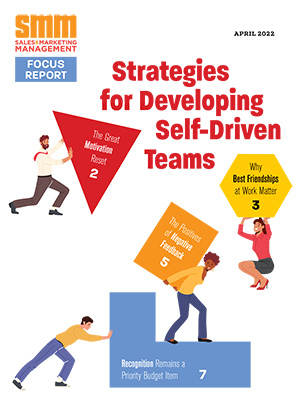In today’s experience economy, more and more consumers prioritize doing over having. That includes all generations, not just millennials, as recent surveys indicate nearly 75 percent of consumers prefer to increase spending on experiences rather than physical possessions.
Tapping in to the experiential trend is essential for building a brand, engaging B2B customers, and driving sales. After all, brands that succeed in connecting with customers on an emotional level are rewarded with greater retention and bottom-line growth when compared with competitors. Engaged customers are more likely to share positive experiences on social media. And according to Harvard Business Review, emotionally engaged customers are:
- At least three times more likely to recommend a product or service
- More likely to remain loyal (44 percent said they rarely or never “shop around”)
- Much less price sensitive (33 percent said they would need a discount of over 20 percent before they would defect)
Immersive experiences are one of the most effective ways to foster the all-important emotional connection with customers. To connect on an emotional level, brands must personalize customer experiences and find creative ways to make them unique and memorable. The best events integrate products and services in interesting and original ways, ensuring the experience is unforgettable – and highly shareable on social media.
Follow these three key steps to plan and implement immersive experiences that engage your B2B customers and transform sales.
Step One: Know What Motivates Your Customers
Creating an immersive experience that builds an emotional connection begins with understanding what motivates your customers. The importance of understanding their motivations can’t be understated since it shapes the overall design of the experience.
To glean crucial information about motivation, you’ll need to dig deep. Surveys – the old standby – are no longer enough. Capture customer feedback through social media, call interactions, and any other listening posts that uncover true perception. Once you’ve got a clearer picture of how customers view your brand and what motivates them, look for behavioral patterns that help predict future wants and needs. And, be aware that deviations from those patterns can serve as an early warning sign that you’re missing customers’ priorities.
This information becomes the framework for the immersive experience you want to create. Once you’ve identified necessary trends and insights, you can design an event that truly engages the individuals who impact your bottom line.
Step Two: Immerse Them in Your Brand
Every experience you create should bring value to both your customers and your brand. The type of experience you provide depends on customers’ intrinsic and extrinsic motivations, and your business goals. Together, these factors define your purpose, which drives the design of the experience.
Opportunities for immersive experiences include:
- Experiential brand activations
- Training
- Conferences/expos/tradeshows
- Product launches
- Sales kickoffs
Tap in to the following key elements of the new experience economy when planning your immersive event.
- FOMO – The fear of missing out is a catalyst to action, and experiences are more difficult to compare than material goods which makes them easier to curate for optimal display on the social media stage.
- Authentic face time – Virtual interaction is far more common than face-to-face relationships in today’s hyper-connected environment, leading customers to crave local experiences where they can make human connections.
- Escapism – Hyper-connectivity also gives consumers the desire to escape from reality and immerse themselves in new and unusual experiences within different environments.
- Tribal bonding – People seek out events where their tribe gathers so they can commune with those who share their interests.
- Instant awareness – The growth of e-commerce platforms and recommendation apps means customers are well informed, living in the moment, and easily connected to events and experiences.
Whether you’re planning a group or an individual immersive experience, it should be purposeful and personalized, and ultimately tie back to your products or services. Support more elaborate events with smaller, related experiences such as games, social campaigns or rewards programs to ensure the personal connection.
For example, at the 2017 Internet of Things World Conference, T-Mobile sponsored an “unpool” party to tie in to its “uncarrier” tagline and transformed the entire pool area into an immersive winter wonderland. Themed activities included branded cold-weather swag (a play on how the network has people covered), virtual-reality skiing (demonstrating network speed), and a snow globe photo booth with faux snow, perfect for social sharing. RFID bracelets helped collect attendee info and personalize post-event communications which resulted in 709 sales leads created and 281,325 people reached via social networks.
Step Three: Measure Your Impact
It can be difficult to measure the effectiveness of an experiential event, but careful planning allows you to get your hands on valuable, precise insight that will inform future efforts. Use the following methods to measure impact.
- Awareness – Measure email open rates and site traffic to determine upfront interest.
- Attendance – Compare registration with attendance, solicit feedback, and track demographics and purchasing behavior to determine how closely attendees match your target audience.
- Technology – Analyze customer interactions with your app, quizzes, games, wearable tech, QU codes, hashtags or beacons to determine which they find the most engaging.
- Social – Learn more about your audience by looking at who talked about your event on social media and what they had to say.
- Sales impact – Track answers to these questions: How many quantifiable leads did your event generate? Did you collect enough usable data? What did you learn about customer preferences?
The trick is to keep the communication channels open. Ask your customers for feedback, reviews and comments on the immersive experience. Then make good use of their responses by using them to enhance and plan future events. Rather than thanking customers for their feedback, show them how you’re using it.
When planned and executed strategically, nothing resonates with B2B customers quite like an immersive experience. Bring your brand to life with experiential events, and create the emotional connections that lead to more loyal customers and more powerful sales.
Maura McCarthy, Vice President of Communication Solutions at ITA Group, Inc., has nearly 20 years of experience in the event, incentive and recognition arenas. ITA Group creates and manages recognition and incentive programs that align and motivate people.


